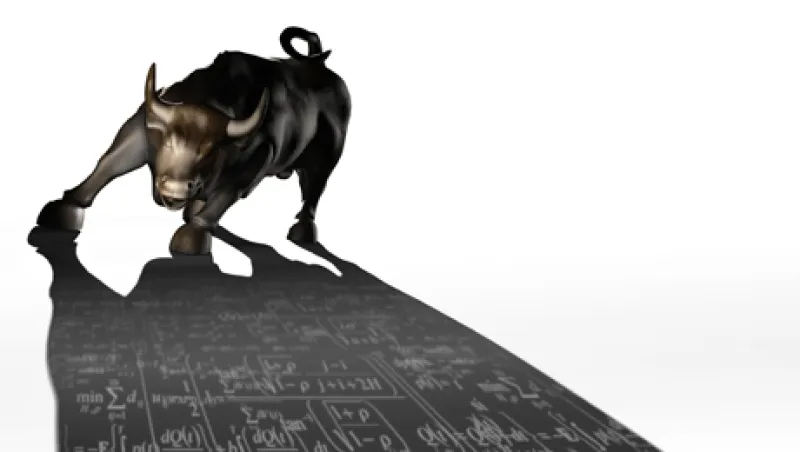When Franklin Delano Roosevelt was asked why he had tapped Joseph Kennedy to be the first chairman of the Securities and Exchange Commission, in 1934, he reputedly answered, “Takes one to catch one,” referring to Kennedy’s reputation as a stock manipulator.
Roosevelt’s point was that no mere lawyer or career politician could understand the complexity of the financial markets. It is worth remembering that Kennedy, despite his flaws, was widely praised as SEC chief. He regulated or made illegal many of the practices that had contributed to his own personal wealth.
One of the main themes of Ghost Exchange, a new documentary about electronic and high frequency trading, made by Camilla Sullivan and Rob Lyall of Arbitrage Pictures, is that the SEC today is staffed (more accurately, understaffed) with lawyers rather than market experts. This leaves the agency many paces behind the financial whizzes and technological innovators. With such inadequate oversight, observers argue, the technological problems that have rippled through the market since the May 2010 flash crash — the glitches that crushed Knight Capital Group, delayed Facebook’s IPO and derailed BATS Global Markets’ listing — are precursors to a major crash that will be caused by high frequency trading.
One such observer interviewed by the filmmakers is James Angel, professor of finance at Georgetown University, who contends that he is “the guy who warned the SEC in writing that this kind of thing [the flash crash] could happen.” According to Angel, the solution is not more regulations but more, and smarter, regulators. “Since the SEC was founded in 1934,” he says, “in current dollars we’ve spent roughly $17 billion — that is less than investors’ losses from one Bernie Madoff. We have been penny wise and pound foolish in how we have funded our regulators.”
Ghost Exchange contains plenty of similar — and engaging — drive-by observations about the necessity for smarter regulation of algorithmic trading. Eric Hunsader of Illinois-based financial data firm Nanex and Ted Kaufman, a former U.S. senator from Delaware, separately make the point that regulators require better data (even if, as Hunsader notes, that data arrives after the fact and is used solely for the purposes of prosecution). Former SEC chairman Harvey Pitt — who explains that his tenure at the agency was in a simpler time, spanning only the September 11, 2001, attacks and the Enron Corp. scandal — makes the point that principles such as “Do no harm” are required for the financial markets, but he also has some concrete advice: Any order put in should be executed, Pitt says, thus preventing manipulation of prices. And former Nasdaq Stock Market vice chairman David Weild IV flicks at the problems inherent in the lobbying process, which distorts rulemaking and rule enforcing and makes regulators’ jobs more difficult. All valid points, to be sure, but the film fails to stitch them together in a way that suggests a clear regulatory path forward. (Indeed, it even does a poor job of accounting for the changes that the SEC has made so far.)
When Ghost Exchange comes across an example of what it deems sensible regulation, the filmmakers skip a little lightly across it. For example, the film mentions the regulations in Singapore and Australia introduced to “prevent speed and algorithmic advantages from embedding themselves within the market structure,” but it provides no details of how similar rules could be implemented in the U.S. or what further measures could be taken.
At times, Ghost Exchange comes across as nothing more than a rich source of handy metaphors and anecdotes to help the viewer appreciate the scope of electronic trading today. For the record, easily the best illustration comes from Hunsader, who describes printing the data for one second’s trading in Walt Disney Co. stock — it amounted to 30,000 distinct trades and a stack of paper half an inch thick (at least, by Hunsader’s telling). That’s a lot of data generated in a short space of time, and, as the film points out (and as Hunsader has made a career of showing), sifting through that data can turn up some troubling trading patterns in any technological glitch, from the flash crash onward.
All this regulatory discussion is fascinating, of course, but the beating heart of the film is the suggestion that if regulatory changes are not made, a future flash crash will hit with sufficient magnitude to destabilize the financial markets. For this assertion there is scant evidence in Ghost Exchange. Though all the talking heads are convinced that such a result is virtually inevitable, no one even attempts to describe what this disaster might look like or how it would affect the markets.
The filmmakers have said that their goal is simply to start the debate and pose intelligent questions without necessarily having the answers — a perfectly defensible journalistic technique. In 1992, for example, Institutional Investor posed the question “What’s so dangerous about derivatives?” Paraphrasing then–New York Federal Reserve Bank president E. Gerald Corrigan, the article’s authors asked if these new products and markets could destabilize the financial markets, and they posited a number of “nightmare scenarios,” one of which predicted the 2008 financial crisis. Ghost Exchange attempts to do the same for high frequency trading but fails to show that a rogue algorithm could have the same effect outcome as II’s “nightmare scenario No. II.”
Unable to summon up hypothetical images of financial chaos, the film falls back on its final broad theme, that high frequency trading erodes market confidence. The movie points to the decline in IPOs and the flight of $300 billion from mutual funds since 2010, contending that high frequency trading has helped produce a profound inequality in the markets, from which investors have fled. Electronic trading constitutes the majority of trading on a given day, mostly in dark pools — unlit exchanges where information is only available after the fact. Neither retail nor professional investors can have faith in opaque markets, the movie asserts, especially markets in which there is a technological class system. Although the 2008 financial crisis has probably caused more of a loss of faith in the markets, the common narrative about high frequency trading is that it has provided a market infrastructure weighted toward the big boys, as well as a majority of anonymous trading and algorithms designed to take advantage of dumb people.
Any one of the film’s three broad themes could have provided a documentary in its own right: the correct regulatory framework for today’s markets, the likelihood of another algo-triggered crash, and high frequency trading’s role in our shaken faith in the markets. The filmmakers instead tried to balance all three. The result feels like an 85-minute trailer for a movie that never starts.
The closing frames of Ghost Exchange point out that “the SEC announced plans to form a new group dedicated to the issue of high frequency trading. They are seeking three new employees.” The film rarely goes into much more detail about what regulators are doing or what they should be doing. As the credits roll, too many questions that the film itself poses remain unanswered.






